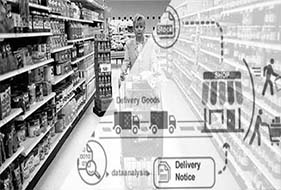Despite the gloomy economic climate, E-commerce firms are experiencing a significant acceleration in growth from 20 per cent in May 2012 to 46 per cent in 2013. Year on Year performance has also increased from 20 per cent in 2012 to 30 percent till June 2013.
In 2012, consumers spent $ 1 Trillion shopping online. In 2013, online sales are expected to reach 1.3 trillion worldwide. E-Commerce spending has increased 11 per cent in Q1 2013 compared to Q1 2012 with 13 percent gain for retail and 8 per cent for travel.
Market Equations India helps organizations in the E- Commerce Retail industry institutionalize data analytics and modeling infrastructure and methodologies into their decision making ecosystem helping them make better and informed fact based business decisions.

Customer Retention & Loyalty
Customers are "OUT" almost as instantly as they were "IN". With increase in new online customers projected at 4 million in 2013, e-commerce growth is being driven by existing customers. Online retailers are focusing on customer retention to maintain the growth momentum and remain competitive.
Mobile & Tablets
Recent figures reveal 2013 Q1 in-store sales at 3.2 per cent while online sales experienced a 20 per cent growth. Mobile e-commerce grew at an impressive rate of 31 per cent during the quarter to reach $8.75 billion. The average order value by device has also shown impressive growth in 2013 with smart phones dominating ($ 107) and tablets ($98.59) marginally behind traditional desktops and Laptops ($99.1). Mobile commerce has also encouraged "show-rooming" creating a huge challenge for traditional retailers competing on margins.
Sales Channels
Amazon and Google are continuing to contribute significantly to the growth of online retailers. Although, Amazon's third party seller program has seen a deceleration it still contributes higher than organic growth for online retailers. However, Google has outperformed Amazon with the Google shopping program (formerly called Google product search). Google product listing ads (part of the Google shopping program) have posted 39 per cent year on year growth.
Personalization
As boundaries between offline and online blurring retailers are offering virtual shopping experiences to their customers to keep them engaged and to push the purchase. Traditional stores are also being converted to fulfillment centers with new websites and mobile enhancements to build the personal rapport with the consumer. Customer reviews and 360 degree product views are making consumers more comfortable about shopping online.
Network Optimization
Online retailers are offering in store pick up and returns and on the other hand engaging location based courier networks with one hour or less delivery time to attract and retain customers.
Dynamic pricing
Online retailers have been aggressively pursuing dynamic pricing strategies although there being a need to balance the conflict between online and offline retail. Show-rooming for example creates a huge challenge for traditional retailers where prices may differ significantly between online and offline.
Image based search
From traditional text based search (for example a search for a blue T shirt throws up a huge selection of results) which may not be consistent or accurate in terms of search result to image based search help consumers post an image to search for identical or similar products from the entire database giving them exactly what they need.
Social Shopping
Google with advertising and search dominance and Facebook with social media dominance have caught the attention of retailers. Shopping is a social experience and bridging the gap between online and offline and innovating shopping experience through social shopping is going to be a game changer.


- CASE STUDY
Demand Forecasting & Inventory Management Solutions for a E-Retailer in the United Kingdom
Market Equations helps a UK based online retailer leverage predictive analytics to accurately forecast demand across multiple DC's globally enabling them reduce inventory costs, improve customer service and retention levels and increase sales by over 200% by reducing stock outs.
Read More

- CASE STUDY
Shipment - Freight Services Optimization Analytics - Supply Chain Optimization
Market Equations India helped a global E-Commerce Fashion retailer with Outbound freight optimization analytics - by cost, service levels, zone, package dimensions and weight thereby, helping the company optimize customer service levels, reduce shipment costs and maximize profitability.
Read More

- CASE STUDY
Social Media Analytics - Linking Facebook fans growth to Sales
Market Equations helped a UK based E-Commerce firm institutionalize sales and marketing Analytics by building a correlation model linking Facebook "likes" and "fan" growth to Sales, helping them allocate their marketing spends effectively into channels that maximize returns and reduce costs incurred in holding excess inventory and retain clients by eliminating...
Read More

- CASE STUDY
Product Segmentation and Sales Data Analysis to increase Sales productivity for a large Multi Brand retailer in Australia
Market Equations India helped a leading multi brand E-Commerce firm extract valuable insights from their large customer database and understand the varying sales trends, customer behavior, product affinity, market baskets to...
Read MoreGet Started : Business Analytics Outsourcing
Market Equations provides Business Analytics outsourcing services helping organizations reduce their current spends while helping them increase profitability by at least 100 percent!
Analytics Outsourcing : Proven Analytics Outsourcing Tips
Today, outsourcing the analytics function has made it affordable and accessible for SME's to now use advanced analytics and predictive models to compete in a fair and rapidly changing business environment.


